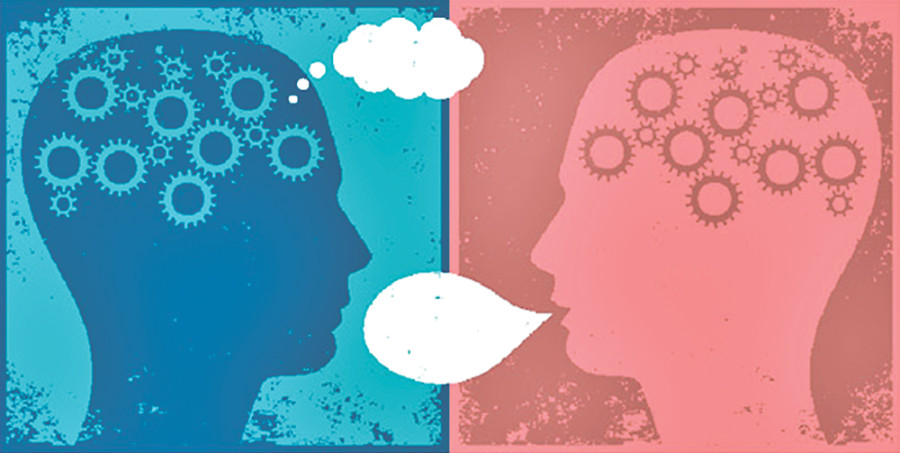Entertainment
Language and treatment
Communication holds a place of paramount significance in medical treatment. While we boast of being a nation with multi-cultured diversity, how efficient are we at communication?
Bikash Gupta
I rushed outside the emergency ward of the BP Koirala Institute of Health Sciences, Dharan, to fetch medicines for my aunt, and saw an elderly man, withering in seemingly agonising pain, being wheeled in a metal stretcher. He clearly seemed to be in utter discomfort, just like many patients who come to the hospital and need emergency treatment. A delay, it seemed, would be devastating.
I happened to come across one. As the attending nurse asked him and his relatives, most of who were women clad in traditional saris and colourful bangles, series of questions regarding the complications, neither he nor his family members understood what she was asking. The nurse, trying to understand the source of pain, employed some gestures with her hand. After some misunderstandings, time lapses and overcoming his own severe discomfort, the patient himself pointed a finger to his stomach while drowning in a pain only he understood.
On my visit to the hospital, especially the emergency section, I came across many such scenarios where language was a major barrier and where valuable minutes were lost in conveying the cause of the illness. Many of them hailed from very remote villages in the Tarai, who were unable to bring with them anyone who could communicate in Nepali because it was an emergency.
Communication in medicine is of paramount significance. Sadly, for many who come from the remote heartlands of the Tarai, communication becomes very hard—especially when the doctors or nurses, a majority of them hailing from the hills, do not understand their language.
Save for the bureaucratic mishandling, the picture of Nepali medicine landscape has been above satisfactory. Within the last decade, there has been an upsurge in the patients flowing to famous treatment hotspots within the country rather than flocking to clinics and hospitals in nearby Indian states. This confidence, however, has not been responded to with the same fervor. With age old discriminations still rearing its serpentine head in 2016, Madhesis are still somewhat less prioritised, misunderstood or simply overlooked. The condition of Indian nationals coming to get treatment in Nepal is even worse. In one of the appalling incidents that I witnessed at the Teaching Hospital, Maharajgunj, I saw a nurse instructing her fellow colleague not to speak Hindi to an Indian national, who was having a hard time understanding what the nurse was instructing. Here, ego and hollow nationalism easily trumped over their duty as caregivers.
If our able doctors and nurses, unfortunately, don another layer of nationalism above the white apron, this may, with time, affect the flow of patients from India. As for people of remote Tarai districts, who are as Nepali as the doctors and nurses themselves, they are at a disadvantage because of the language they use.
One way this could be overcome is by requiring medical students to take major languages other than Nepali. For example, Maithili, the second most widely spoken language in Nepal—which has a resemblance with Hindi, Tharu, and Bhojpuri—could be a language medical students can learn. Similarly, the doctors and nurses who are Madhesis themselves, and who over the years have become good at conversational Nepali too, can learn any other major language themselves. Learning a language does not harm anybody, in fact, it adds to the repository of knowledge and helps the caregiver understand a culture better.
As for people of remote regions of the Tarai and other non-Nepali speaking regions, this slight tweak in medical education—which is nothing new in western countries where colleges and universities not only encourage students to take extra languages but have these languages in the curriculum—would prove to be a boon. The patients will feel more comfortable and open at the prospect that someone on the other side of the desk, or someone measuring the pulse or adjusting the fluid pipe speaks their language and understands their culture. On the contrary, it will be very insulting and disappointing, if in the 21st century a patient’s treatment, somehow, gets influenced by his or her culture, origin, dress, skin colour or language.
If we could make it mandatory for our students to learn a new language from the baskets of many languages in our country as a part of the curriculum—not just limited to medicine—we will be providing a lot more genuine service. Citizens adept in more than their native languages will become bridges between ethnic communities. If these citizens grow in number, we will have a healthy bridge. And the river which reeks of superiority, hierarchies, arrogance and dominance will be forgotten.
Gupta is an undergraduate student. He tweets @iambikashgupta




 17.12°C Kathmandu
17.12°C Kathmandu










